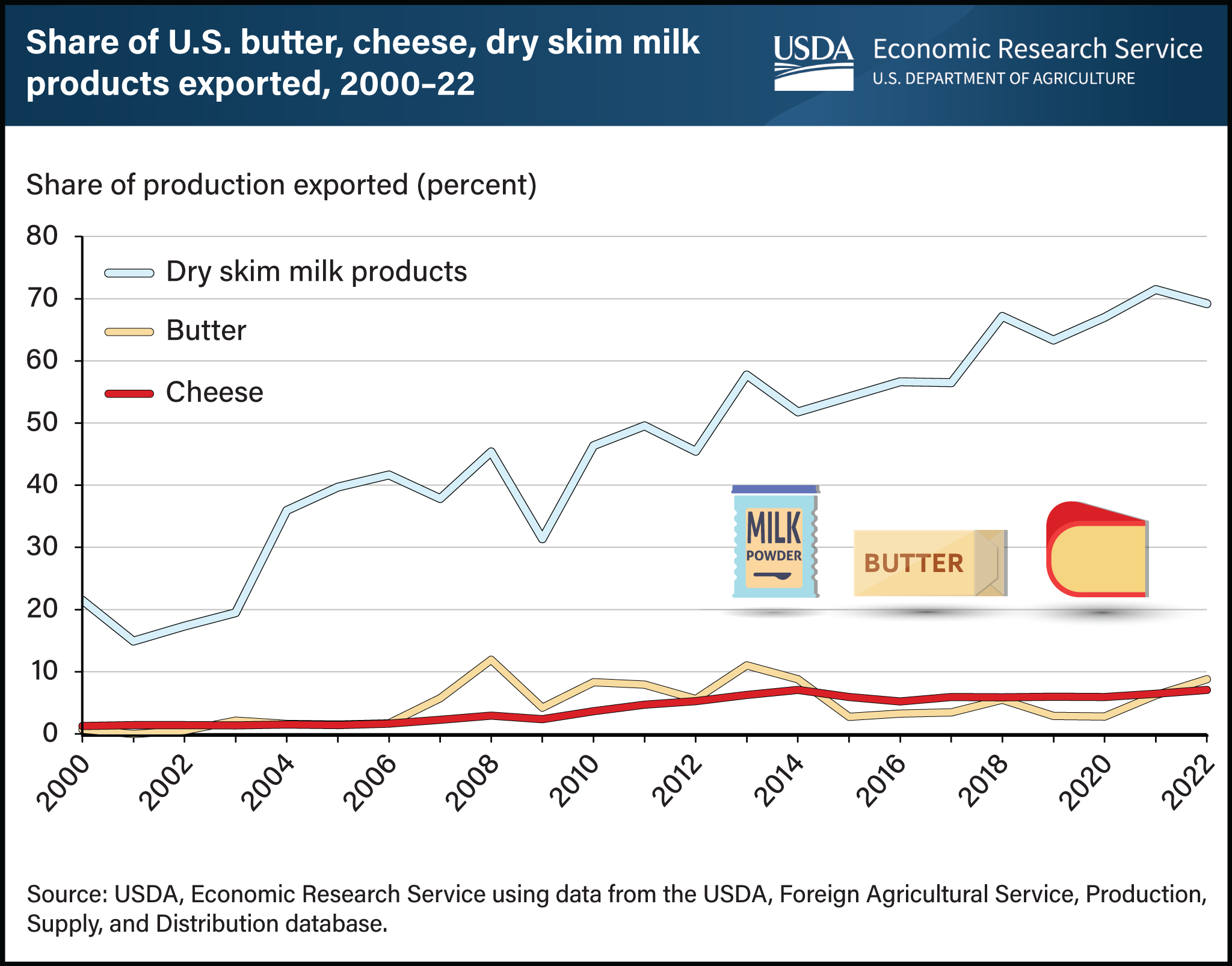Most U.S. butter and cheese is consumed domestically, while most dry skim milk products are exported
- by Danielle J. Ufer
- 11/7/2023

The United States is a large producer and exporter of dairy products. Some dairy products are exported more than others. Exports-to-production ratios, which indicate the share of total U.S. production destined for export each year, show that U.S. dry skim milk products are increasingly exported. In 2022, U.S. exports of dry skim milk products (nonfat dry milk, skim milk powder, and dry skim milk for animal use) were equivalent to 69 percent of production by volume. Since 2000, the exports-to-production ratio of dry skim milk products has increased, more than tripling from 2000 to 2022. By contrast, U.S.-produced cheese and butter mostly are kept for use in domestic markets. Though the exports-to-production ratios of butter and cheese also have trended upward, U.S. exports of butter equated to less than 9 percent of 2022 production, and exports of cheese were equivalent to about 7 percent of production. Differences between exports of butter and cheese and exports of dry milk products partly can be explained by shelf stability and ease of transport. Dry skim milk products are much easier to ship internationally and have a lower risk of spoilage than fresh and/or refrigerated dairy products. Although relatively low proportions of U.S. cheese are exported, in 2022 the United States was the second largest exporter of cheese by value worldwide, with total cheese exports estimated at nearly $2.3 billion. This chart is drawn from the USDA, Economic Research Service report U.S. Trade Performance and Position in Global Meat, Poultry, and Dairy Exports published in April 2023.

